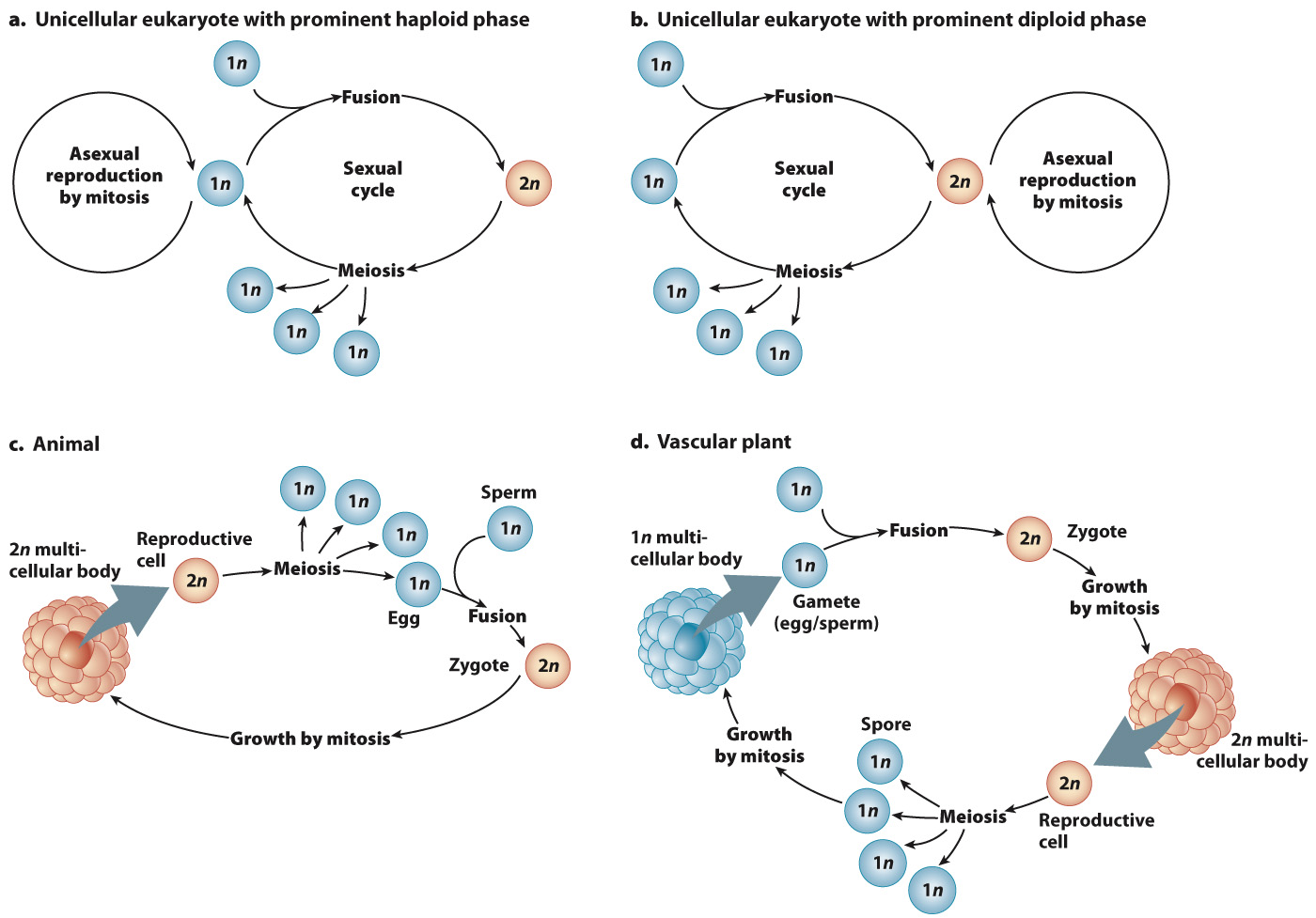Sex promotes genetic diversity in eukaryotes and gives rise to distinctive life cycles.
In Chapter 26, we saw how Bacteria and Archaea generate genetic diversity by horizontal gene transfer. Horizontal gene transfer has been documented in eukaryotic species, but it is relatively uncommon. How then do eukaryotes generate and maintain genetic diversity within populations? The answer is sex.
Sexual reproduction involves meiosis and the formation of gametes, and the subsequent fusion of gametes during fertilization (Chapters 11 and 42). Sex promotes genetic variation in two simple ways. First, meiotic cell division results in gametes or spores that are genetically unique. Each gamete has a combination of alleles different from the other gametes and from the parental cell as a result of recombination and independent assortment. Second, in fertilization, new combinations of genes are brought together by the fusion of gametes. Interestingly, a few eukaryotic groups have lost the capacity for sexual reproduction. The best-
Meiotic cell division results in cells with one set of chromosomes. Such cells are haploid. Sexual fusion brings two haploid (1n) cells together to produce a diploid (2n) cell that has two sets of chromosomes. The life cycle of sexually reproducing eukaryotes, then, necessarily alternates between haploid and diploid states.
Many single-

As shown in Fig. 27.3b, some single-
The two life cycles just introduced, of Chlamydomonas and diatoms, are similar in many ways. In both, haploid cells fuse to form diploid cells, and diploid cells undergo meiotic cell division to generate haploid cells. Both life cycles also commonly include cells capable of persisting in a protected form when the environment becomes stressful. Why some single-
Sexual reproduction has never been observed in some eukaryotes, but most species appear to be capable of sex, even if they reproduce asexually most of the time. Variations on the eukaryotic life cycle can be complex, especially in parasitic microorganisms that have multiple animal hosts. All, however, have the same fundamental components as the two life cycles described here.
In the following chapters, we discuss multicellular organisms in detail. Here we note only that animals, plants, and other complex multicellular organisms have life cycles with the same features as those just discussed. The big difference is that in animals, the zygote divides many times to form a multicellular diploid body before a small subset of cells within the body undergoes meiotic cell division to form haploid gametes (eggs and sperm). During fertilization, the egg and sperm combine sexually to form a zygote (Fig. 27.3c). In animals, as in diatoms, the only haploid phase of the life cycle is the gamete. As we will see in Chapter 32, plants have two multicellular phases in their life cycle, one haploid and one diploid (Fig. 27.3d). Like single-